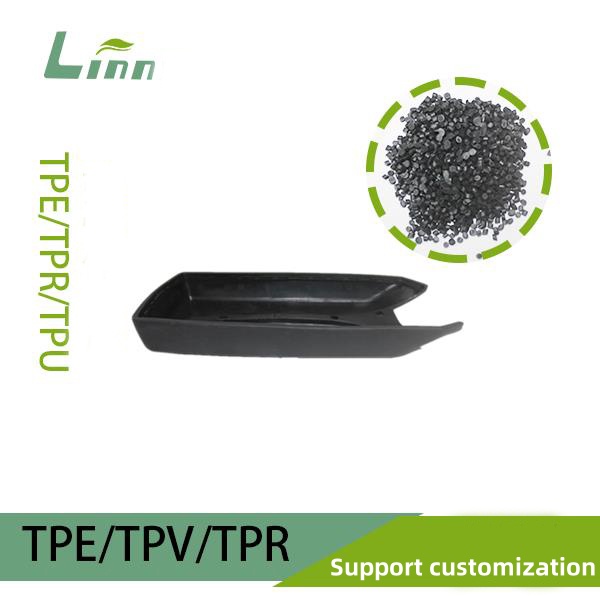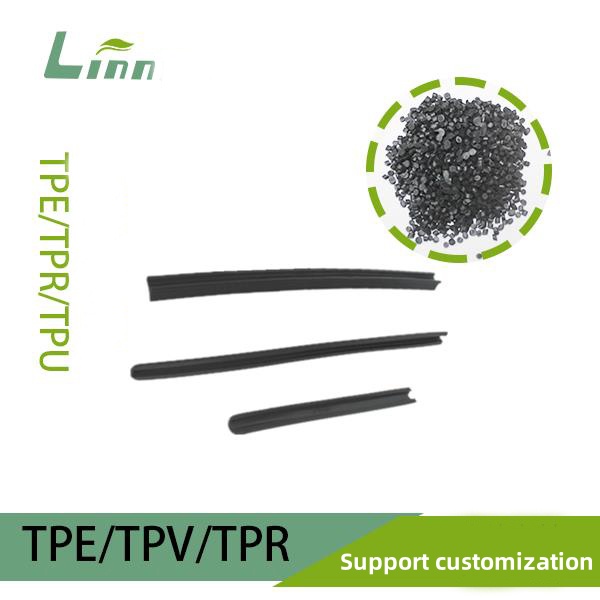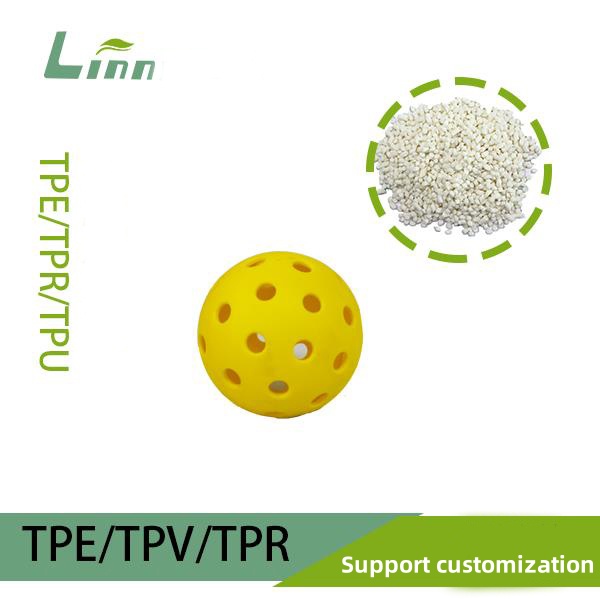Having spent years in the TPE (Thermoplastic Elastomer) industry, I know how frustrating it can be when gel dot peeling occurs in automotive TPE materials. This issue not only affects the product’s appearance but can also compromise functionality and even lead to customer complaints. TPE is widely used in automotive applications like sealing strips, interior components, and floor mats, yet gel dot peeling remains a common but tricky challenge. In this article, I’ll draw on my expertise to analyze the causes of gel dot peeling and share practical, actionable solutions to help you resolve it effectively.

1. What Causes Gel Dot Peeling in Automotive TPE?
Gel dot peeling typically appears as small raised dots, flaking, or rough particles on the TPE surface, especially noticeable on automotive interior parts or high-precision components. These defects ruin the surface texture, impacting both aesthetics and tactile quality. Below, I’ve outlined the main causes to help you pinpoint the root of the issue.
1.1 Insufficient Material Drying
If TPE contains moisture or other volatile substances before processing, these can vaporize during high-temperature molding, forming tiny bubbles or particles that cause surface peeling.
1.2 Improper Processing Temperature
Automotive TPE is typically processed at 160°C to 230°C (depending on the grade). Excessively high temperatures can degrade the material, producing volatile byproducts, while temperatures that are too low may result in poor flowability, leaving unmelted material that leads to peeling.
1.3 Contaminated or Worn Mold Surface
Mold surfaces contaminated with oil, TPE residue, or debris can disrupt material flow, causing localized peeling. Additionally, worn molds with altered surface roughness from prolonged use can also contribute to gel dot defects.
1.4 Incorrect Process Parameters
Excessive injection pressure, overly fast injection speeds, or insufficient cooling time can lead to uneven cooling in the mold, creating stress concentrations that trigger surface peeling.
1.5 Issues with Material Formulation or Batch
If the TPE formulation includes incompatible additives (like fillers or plasticizers) or if batch-to-batch consistency varies, processing may produce fine particles or phase separation, resulting in gel dot peeling.

1.6 Environmental Factors
High humidity in the processing environment or improper storage of raw materials can cause TPE to absorb moisture, which evaporates during molding and creates surface defects.
1.7 Improper Secondary Processing or Post-Treatment
Automotive TPE parts often undergo post-processing like coating or bonding. Using unsuitable solvents or processes can cause localized surface peeling.
2. How to Solve Gel Dot Peeling in Automotive TPE?
To tackle these causes, I’ve compiled a comprehensive set of solutions covering material preparation, process optimization, and mold maintenance. Here’s how to address the issue step by step:
2.1 Enhance Material Drying
TPE must be thoroughly dried before processing. I recommend using a dehumidifying dryer at 80°C to 100°C for 2-4 hours, ensuring moisture content is below 0.1%. For high-performance automotive TPEs (like TPU-based or TPV), stricter drying conditions may be needed.
Drying Process Parameters Reference Table:
| TPE Type | Drying Temperature (°C) | Drying Time (Hours) | Target Moisture Content (%) |
|---|---|---|---|
| SEBS-based TPE | 80-90 | 2-3 | <0.1 |
| TPV | 90-100 | 3-4 | <0.1 |
| TPU-based TPE | 100-110 | 3-4 | <0.05 |
My Experience: I once assisted a Linn client with peeling issues on automotive sealing strips. They were drying for just 1 hour, leaving residual moisture. Extending drying to 3 hours nearly eliminated the gel dot peeling.
2.2 Optimize Processing Temperature
Precise temperature control is critical to preventing gel dot peeling. I suggest referring to the processing guidelines from your TPE supplier and conducting small-scale tests to find the optimal range.
Barrel Temperature: Set the rear zone to 160°C-180°C and the nozzle to 190°C-210°C to avoid degradation from localized overheating.
Mold Temperature: Maintain 20°C-50°C to ensure even cooling and minimize surface stress.
Graduated Heating: Increase temperature progressively from feed to nozzle to prevent large temperature gaps that could cause material breakdown.
Case Study: A client producing automotive interior parts had peeling issues due to barrel temperatures exceeding 240°C, which degraded the TPE. Lowering it to 210°C significantly reduced the problem.

2.3 Improve Mold Maintenance
Mold condition directly impacts TPE surface quality. Here’s what I recommend:
Clean the Mold: After each shift, clean the mold with isopropyl alcohol or another mild solvent to remove oil, residue, or dust. Avoid harsh acidic or alkaline cleaners that could damage the mold.
Check Surface Roughness: Keep mold surface roughness at Ra 0.4-0.8. Surfaces that are too rough or too smooth can cause peeling. Repolish or chrome-plate if necessary.
Regular Maintenance: Inspect molds for wear every 5,000-10,000 cycles, repairing scratches or dents as needed.
Tip: I’ve seen many peeling issues caused by mold residue buildup. Making regular cleaning a habit can drastically cut defect rates.

2.4 Adjust Process Parameters
Proper process settings are key to surface quality. Here’s how to optimize:
Injection Pressure: Start at 50-80 MPa to avoid over-compressing the material, which can lead to particle formation.
Injection Speed: Use medium to low speeds to reduce friction between the material and mold. In my experience, high speeds are often a hidden cause of peeling.
Cooling Time: Extend to 10-30 seconds (depending on part thickness) to ensure full solidification and minimize stress.
Holding Time: Set to 2-5 seconds at 50%-70% of injection pressure to fill micro-voids.
Process Parameter Optimization Table:
| Process Parameter | Recommended Range | Remarks |
|---|---|---|
| Injection Pressure (MPa) | 50-80 | Increase slightly for thin-walled parts |
| Injection Speed | Medium to Low | Prevents material degradation |
| Mold Temperature (°C) | 20-50 | Higher temps improve surface finish |
| Cooling Time (Seconds) | 10-30 | Longer for thicker parts |
2.5 Verify Material Formulation and Batch
Automotive TPE demands high formulation consistency. If peeling is material-related, try these steps:
Request Data Sheets: Ask your supplier for a detailed material data sheet and processing recommendations to confirm additives (like fillers or plasticizers) are suitable.
Trial Molding: Test new batches with small-scale molding to ensure performance stability.
Batch Control: Stick to a single supplier and grade to avoid peeling from batch variations.
Real-World Example: A Linn client faced worsening peeling after switching TPE batches. Testing showed the new batch had excessive filler content. Adjusting the formulation resolved the issue.
2.6 Optimize the Production Environment
Environmental conditions significantly affect TPE quality. My suggestions:
Control Humidity: Keep workshop humidity below 50%, using a dehumidifier if needed.
Sealed Storage: Store raw materials in airtight containers to prevent moisture absorption. I helped a client improve warehouse management, and after sealing TPE storage, peeling rates dropped by 40%.

2.7 Standardize Post-Processing
Automotive TPE parts often require coating or bonding. Here’s how to avoid peeling during post-treatment:
Use Compatible Solvents: Choose TPE-compatible solvents (like low-polarity types) to prevent surface erosion or peeling.
Test Post-Processes: Conduct small-scale trials before coating or bonding to ensure no surface damage.
Maintain Cleanliness: Keep post-processing areas dust-free to avoid contamination.
3. How to Prevent Gel Dot Peeling in Automotive TPE?
Fixing peeling is important, but preventing it saves time and resources. Here are my top prevention strategies:
Standardize Processes: Include drying, process parameters, and mold maintenance in an SOP for consistency.
Train Operators: Regular training ensures the team understands TPE properties and processing nuances. Many peeling issues stem from operator errors.
Implement Inspections: Use a surface roughness tester or microscope on the production line to catch surface defects early.
Partner with Suppliers: Stay in touch with your TPE supplier for updates on material data or processing tips to keep your techniques current.
4. Real-World Case Study
Last year, a Linn client contacted me about gel dot peeling on their automotive TPE floor mats, which was hurting customer satisfaction. After visiting their facility, I identified three key issues:
Inadequate Drying: Materials were dried for only 1.5 hours, leaving excess moisture.
Mold Contamination: The mold had TPE residue buildup due to skipped cleanings.
Excessive Injection Speed: The client used maximum speed for efficiency, causing material degradation.
My recommendations were:
Extend drying to 3 hours at 90°C.
Clean the mold after each shift and adjust surface roughness to Ra 0.6.
Reduce injection speed to medium and extend cooling time to 20 seconds.
These changes cut the peeling rate from 15% to 1%, boosting both production efficiency and product quality. This case reinforced that peeling often results from multiple factors, requiring a comprehensive fix.

5. Frequently Asked Questions
To make things easier, I’ve answered some common questions about TPE gel dot peeling:
Q1: Why does peeling only occur in certain areas?
A: It’s likely due to localized mold contamination or uneven cooling. Inspect the mold surface and cooling system for uniform temperature distribution.
Q2: Can extended drying harm TPE performance?
A: Proper drying won’t affect performance, but excessive time or temperature may cause degradation. Stick to the supplier’s recommended parameters.
Q3: Is peeling related to material batches?
A: Yes, batch-to-batch formulation differences can cause it. Standardize grades and request consistency reports from your supplier.
Q4: Can post-processing cause peeling?
A: Incompatible solvents or processes can damage the surface. Test post-treatment materials to ensure TPE compatibility.
Q5: How do I quickly distinguish process vs. material-related peeling?
A: Cross-sectional analysis or microscopy can help. Bubbles suggest moisture or degradation; particles point to formulation or contamination issues.
6. Conclusion
Gel dot peeling in automotive TPE can be complex, but with the right diagnosis and targeted solutions, it’s entirely manageable. My advice is to focus on every detail—drying, processing, and mold care. Better yet, proactive prevention through standardized processes and robust quality controls can keep peeling out of your production line.
I hope this guide provides practical insights to enhance your TPE manufacturing. If you face other challenges, feel free to reach out—I’m happy to share my experience to help you produce top-quality automotive TPE parts!



